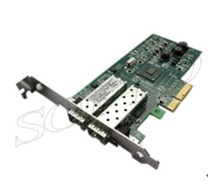-

- Sopto Home
-

- Special Topic
-

- PCI-E Card Knowledge
-

- Introduction of PCI Express 2.0
PCI-E Card Knowledge
- Info about Network Interface Card Teaming
- How to Setup a Server with Multiple Network Interface Adapters?
- How to Reconnect an Internet Network Adapter for an Acer Aspire?
- 9 Things to Do When Your Internal Network Card Stops Working
- Ethernet Standards NIC for Home Networking
- What Is a Network Interface Adapter?
- How to Configure a Network Interface Card in Linux?
- How should Configure Your NIC for ISA and TMG?
- Recommended Network Card Configuration for Forefront UAG Servers
SOPTO Special Topic
Certificate



Guarantee
Except products belongs to Bargain Shop section, all products are warranted by SOPTO only to purchasers for resale or for use in business or original equipment manufacturer, against defects in workmanship or materials under normal use (consumables, normal tear and wear excluded) for one year after date of purchase from SOPTO, unless otherwise stated...
Return Policies
Defective products will be accepted for exchange, at our discretion, within 14 days from receipt. Buyer might be requested to return the defective products to SOPTO for verification or authorized service location, as SOPTO designated, shipping costs prepaid. .....
Applications

PCI-E NIC Cards provide redundant connectivity to ensure an uninterrupted network connection.
PCI-E NIC Cards are ideal for VM environments with multiple operating systems, requiring shared or dedicated NICs.
They are specially designed for desktop PC clients, servers, and workstations with few PCI Express slots available.
SOPTO Products
- Fiber Optic Transceiver Module
- High Speed Cable
- Fiber Optical Cable
- Fiber Optical Patch Cords
- Splitter CWDM DWDM
- PON Solution
- FTTH Box ODF Closure
- PCI-E Network Card
- Network Cables
- Fiber Optical Adapter
- Fiber Optical Attenuator
- Fiber Media Converter
- PDH Multiplexers
- Protocol Converter
- Digital Video Multiplexer
- Fiber Optical Tools
- Compatible
Related Products
Performance Feature
PCI-E Card Knowledge
Recommended


Introduction of PCI Express 2.0
PCI-SIG announced the availability of the PCI Express Base 2.0 specification on 15 January 2007. The PCIe 2.0 standard doubles the transfer rate compared with PCIe 1.0 to 5 GT/s and the per-lane throughput rises from 250 MB/s to 500 MB/s. This means a 32-lane PCIe connector (×32) can support throughput up to 16 GB/s aggregate.
PCIe 2.0 motherboard slots are fully backward compatible with PCIe v1.x cards. PCIe 2.0 cards are also generally backward compatible with PCIe 1.x motherboards, using the available bandwidth of PCI Express 1.1. Overall, graphic cards or motherboards designed for v2.0 will work with the other being v1.1 or v1.0a.

Gigabit Dual SFP Slots PCI-E 2.0 Server Adapter Card
PCI Express Base 2.0 specification doubles the interconnect bit rate from 2.5 GT/s to 5 GT/s in a seamless and compatible manner. The performance boost to 5 GT/s is by far the most important feature of the PCI Express 2.0 specifications. It effectively increases the aggregate bandwidth of a 16-lane link to approximately 16 GB/s. The higher bandwidth will allow product designers to implement narrower interconnect links to achieve high performance while reducing cost.
A number of optimizations and improvements have been made to the protocol and software layers of the PCI Express architecture in the PCI Express Base 2.0 specification. These include:
- Dynamic link speed management - to control the speed at which the link is operating
- Link bandwidth notification - to notify software (operating system, device drivers, etc) of changes in link speed and width
- Capability structure expansion - to expand the control registers to better manage devices, slots and the interconnect
- Access control services - optional controls to manage peer-peer transactions
- Completion timeout control - to define a required disable mechanism plus related optional enhancements
- Function-level reset - optional mechanism to reset functions within a device
- Power limit redefinition - to redefine slot power limit values to accommodate devices that consume higher power
The PCI-SIG also said that PCIe 2.0 features improvements to the point-to-point data transfer protocol and its software architecture.
Sopto is professional in manufacturing and providing PCI-e 2.0 Server Cards and other version of PCI-Express Network Interface Cards with high quality and low cost.
For more information, please contact a Sopto representative by calling 86-755-36946668, or by sending an email to info@sopto.com.




